TRADITIONAL CHINESE INTERPRETATION OF LYME DISEASE
Within Traditional Chinese Medicine, illness can come from an external source (a pathogenic invasion) or it can be caused by an internal imbalance (an emotional blockage).
External Causes of Disease
Pathogenic invaders from the external environment include forms of bacteria, viruses, protozoa, and yeast, among others. Four thousand years ago, when The Yellow Emperor’s Classic of Internal Medicine was written (Veith I, trans. Berkeley and Los Angeles, CA: University of California Press; 2002), Traditional Chinese Medicine did not have a concept of “germs,” as we know it today; the invasion was rather described and attributed to the overt and covert manifestations of the disease, and its symptoms resembled the climates, including heat, cold, damp, wind, and dry. These were referred to as the five evils, described below:
Wind: Carries pernicious energy as it tries to gain access to the inner kingdom of the body. The Chinese referred to wind as “the carrier of one hundred and one evils.” As the wind penetrates through our defenses, we may feel dizzy, uncoordinated, and irritable. Symptoms may seem to move from place to place; for example, first an achy knee, then a headache and stiff neck—for movement is the nature of wind.
Heat: Always disturbs the spirit, causing irritability, muddled thinking, disturbed sleep, and feelings of being hot or febrile. When heat penetrates the body, the joints may become hot and inflamed; constipation, skin eruptions, and rashes are common as well as hot itchy eyes and headaches can occur.
Damp: Creates a feeling of being underwater and experiencing symptoms such as foggy thinking, dull achy joints, and fatigue. A sluggish digestion with gas and protracted elimination, dull achy headaches, and generalized body aches and pains are common.
Cold: Makes us feel uncomfortably cold and hypersensitive to the cold, causing us to want to wrap ourselves up in a blanket. Cold, as it penetrates, creates a sense of unrelenting fatigue and deep aches like those you feel when you step into frigid water.
Dry: Creates symptoms such as dry mouth, dry nasal passages and sinuses, and constipation. As it penetrates deeper, it can affect the lungs, causing dry, thickened mucous, and a dry cough.
Internal Causes of Disease
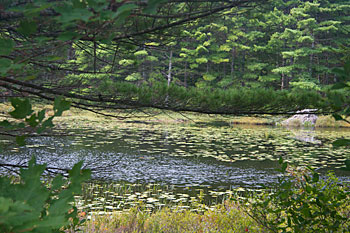 In Traditional Chinese Medicine, unrestrained emotions are considered to be just as responsible for illness as are external pathogens. It is now commonly recognized in the West as well as in the East that emotions and stress can cause physical diseases. Like the five external evils, Chinese medicine names five destructive emotions that correspond to the five elements of Fire, Earth, Metal, Water, and Wood.
In Traditional Chinese Medicine, unrestrained emotions are considered to be just as responsible for illness as are external pathogens. It is now commonly recognized in the West as well as in the East that emotions and stress can cause physical diseases. Like the five external evils, Chinese medicine names five destructive emotions that correspond to the five elements of Fire, Earth, Metal, Water, and Wood.
Anger: The emotion associated with the Wood element. In its balanced, controlled state, anger can be a healthy emotional response to stress, frustration, or injustice. If, however, we repress the expression of anger so that it is allowed to accumulate, fester, and become unhealthy, it can cause physical symptoms, such as migraine headaches, insomnia, ulcers, and multiple other manifestations of Liver distress.
Joy: The emotion associated with the power of Fire. When the Heart is secure within itself, joy is constant and unwavering. If, however, the Heart is overstimulated or agitated, the Fire energy can transmute joy into mania, leading to symptoms such as exaggerated giggling, chattering, and nervous exhaustion. If excess joy remains ungrounded and continues unchecked, more severe disorders can appear, such as insomnia, low blood pressure, dizziness, irregular heartbeat, and heart palpitations.
Worry: The emotion associated with the Earth energy. A balanced Earth emotion, such as concern for others, can degenerate into obsessive anxiety and worry. When Earth becomes “sick with worry,” energies in the Stomach can stagnate, causing feelings of heaviness, laziness, inertia, and water retention.
Grief: The emotion associated with element of Metal. Grief, when balanced and openly expressed, allows us to experience natural feelings of loss and mourning. When grief becomes excessive, however, a hardening process sets in that, as it grows deeper, can lead to spine and joint problems, constipation, irritable bowel syndrome, and respiratory diseases, such as bronchitis, asthma, and pulmonary fibrosis.
Fear: The emotion associated with Water. In its healthy, balanced state, fear provides us with the ability to remain alert and attentive, ready and courageous enough to face any situation that presents itself. If fear becomes excessive, however, our ability to think and act becomes frozen; and if fear penetrates deeper, we can become prone to anxiety, phobias, and paranoia. Excessive fear can generate physical disorders such as arthritis, urinary infections, kidney stones, sexual problems, neurological symptoms, and heart disturbances.
PREVENTION AND TREATMENT IN TRADITIONAL CHINESE MEDICINE: THE GARDEN AND THE BATTLEFIELD:
Traditional Chinese Medicine views disease as a constant interplay between the body’s immune system (the Wei Chi) and the internal and external environments. The most effective way to prevent getting any disease is to have a robust, dynamic immune system. Chinese medicine views the immune system as a healthy, thriving garden that is naturally resistant to an invasion of insects or diseases.
A garden is kept healthy when it has the proper amount of sun and shade, water, and tender loving care. Of course, if we notice infections in it, we can augment the wellnourished garden’s natural defenses by targeting the invaders. So it is with our bodies. If we support ourselves with a nutritional and healthy diet by minimizing the intake of refined carbohydrates and food additives, and emphasizing the use of fresh greens, good organic protein, and complex carbohydrates, we begin to tend our internal garden well. Add to this fresh air and abundant water (not soft drinks and excessive caffeine), and we are adding to our immunological health. Finally, if we can give ourselves some tender loving care, which is nurtured by healthy, supportive relationships and the elimination of destructive relationships, we are well on our way to maintaining robust immunity.
In many cases, germs trying to gain access into our bodies are met by antibody defenses and destroyed before gaining deeper entry; as this battle on the surface occurs, we may feel out of sorts for a few days, possibly a bit achy and fatigued, but eventually our vitality is restored. Disease results if our immune energies are not strong enough to battle and prevent a pathogen from penetrating into our inner kingdom.
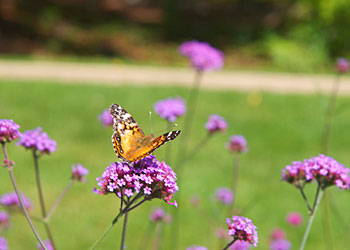 Lyme disease is a powerful adversary, not only because it is a particularly voracious and powerful invader, but also because it is a trickster, capable of changing form to elude our defenses. We need to employ the best weaponry we can muster against its invasion. These weapons include antimicrobial herbs and prescription drugs that are known to target and kill the bacteria. In the Eastern approach, while giving targeted herbs to do battle, we simultaneously support the immune system and help the Liver in its detoxification and elimination of dead toxic matter.
Lyme disease is a powerful adversary, not only because it is a particularly voracious and powerful invader, but also because it is a trickster, capable of changing form to elude our defenses. We need to employ the best weaponry we can muster against its invasion. These weapons include antimicrobial herbs and prescription drugs that are known to target and kill the bacteria. In the Eastern approach, while giving targeted herbs to do battle, we simultaneously support the immune system and help the Liver in its detoxification and elimination of dead toxic matter.
The information that follows is quite broad. Within the limits of our knowledge and of practical web publishing it attempts to be reasonably comprehensive. Please don’t think that we expect you to apply any more than a small portion of these protocols and practices to your own personal lyme disease support program. Everyone is different and Lyme itself is notorious for manifesting in as many ways as there are Lyme patients. This is meant to serve as a resource for you and your Lyme-literate health care provider to use in designing your own path to health.
Complementary treatments for Lyme disease incorporate a broad-spectrum strategy based on supporting the body’s immune functions and creating an inhospitable environment for the Lyme spirochete to take hold. This would include ongoing attention to a healthy diet, nutritional supplementation, physical activity, herbal support, acupressure (if you don’t have access to an acupuncturist), and a positive mental outlook. The outcome will be improved by having a strong immune system and by beginning antispirochete treatments as early as possible.
DIET
1) Avoid sugar, refined carbohydrates, and processed foods.
Sugar feeds the spirochetes! Avoid foods that are rich in sugar, as well as white flour products, such as white bread, pasta, white rice, pretzels, and chips. Although white flour doesn’t taste sweet, after intake it instantly metabolizes as sugar in the body and affects us in the same way as sweets do, increasing inflammation, and negatively impacting our immune response.
Sugar is very addictive and it’s difficult to break the habit. My clients and I know from experience that if you fight the urge for three or four days, not only does it become easier to stay off the sugar but symptoms such as joint pain will get much better and your energy improves. Most refined foods also contain multiple chemicals that are used to enhance flavor, increase shelf life, or add color or texture to our foods. These are also inflammatories that should be avoided.
2) Eat fiber-rich foods, including vegetables, fruits, and whole grains.
Vegetables, fruits, and whole grains provide not only vitamins and minerals, but also lots of dietary fiber which is essential for a healthy digestive system. When the digestion falters because of a sluggish metabolism, undigested food particles escape through the walls of the intestine, and into the body fluids. These undigested food particles are recognized by our immune system as “renegade” proteins roaming in our body fluids. The immune system rushes to the rescue, gobbling up the “renegade” proteins. Eventually, this constant internal battle causes our immune system to become depleted and less available to fight attacking bacteria such as Lyme disease spirochetes.
3) Drink plenty of fresh water (eight to ten 8 oz glasses) every day.
Since most of the bottled water we buy has been shown to be no better than tap water, it is best to drink filtered water. Proper hydration serves many essential functions that support the body’s effectiveness in dealing with Lyme disease. Sufficient hydration supports the natural detoxification of the body’s waste by making the work of the kidneys more effective. Hydration also bulks up the stool in the intestines and supports proper elimination. Traditional Chinese Medicine describes it as Water keeping Fire under control and this concept seems to be confirmed in Western medicine. It is recognized that proper hydration keeps inflammation under control.
4) Don’t smoke! And keep alcohol consumption to a minimum.
EXERCISE
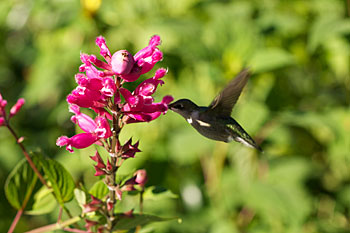 Regular movement and exercise promote the circulation of energy and blood throughout the
Regular movement and exercise promote the circulation of energy and blood throughout thebody. Many Lyme-literate doctors prescribe regular exercise to their patients because exercise
supports the immune functions and helps to regulate the body’s inflammation response. As Dr.
Kenneth Singleton, author ofThe Lyme Disease Solution (Dallas, TX: Brown Books Publishing
Group; 1st Ed. February 1, 2008) suggests, [exercise] is also excellent for increasing endorphin production and for improving mental and emotional health, thus helping to manage and possibly reverse the anxiety and depression that are often associated with Lyme disease.
Exercise helps to move energy throughout the body, stimulating healing, combating physical fatigue, and relieving emotional stress. When you begin to exercise, find a balance, begin slowly, and build up your routine. In order to understand your “type” within the Five Element system, and choose which exercises work best for you and your immune system, you may refer to my book, Chinese Medicine for Maximum Immunity (available on this Web site).
NUTRITIONAL SUPPLEMENTS
Vitamin C: This powerful antioxidant and immune supporter also has antihistamine actions that make this a powerful ally to support the body’s ability to deal with Lyme disease. Vitamin C also has significant antioxidant actions, fighting free radicals (molecular fragments that attack healthy cells), soothing inflamed tissues, and helping to maintain healthy connective tissue, often ravaged with Lyme disease.
✔ Take 1000 mg daily, or as prescribed by your health care provider.
Coenzyme Q10: CoQ10 is a powerful antioxidant that supports circulation and general coronary artery functioning, which makes it a significant player in the prevention and treatment of coronary artery disease. Its other main function, however, is equally as important; that is, its vital role in the production of the body’s energy on a cellular level. CoQ10 has been shown to support the functioning of the cell’s energy plant, the mitochondria, as it produces the cell fuel, adenosine triphosphate (ATP); this action, in turn, supports every function of the body, especially in times of extreme stress, and helps to counter the excessive fatigue and debility so often associated with Lyme disease.
✔ Take 50 mg daily as a preventative, 100 mg daily with Lyme disease, or as prescribed by your health care provider.
Vitamin D3: Vitamin D3 has probably been one of the most intensively studied vitamins of this decade. Data indicate that there is an epidemic of Vitamin D3 deficiency in the U.S., particularly in the Northern states. Recent research shows how important this vitamin is in promoting bone health, modulating cell growth and proliferation, supporting immune and neuromuscular functions, and reducing inflammation. (Office of Dietary Supplements, National Institutes of Health Web site. Dietary supplement fact sheet: vitamin D. Reviewed June 24, 2011. – ods.od.nih.gov)
I wholeheartedly recommend taking a Vitamin D3 supplement, as its benefits are numerous, and it is safe if the dose is below 5000 IU daily. Vitamin D3 is a vital ally in dealing with Lyme disease. Its immune-balancing and anti-inflammatory actions make this an important vitamin to support the immune functions when needed and to calm a hyperactive immune system in autoimmune diseases.
✔ Take 2000 IU of D3 daily, or as directed by your health care provider.
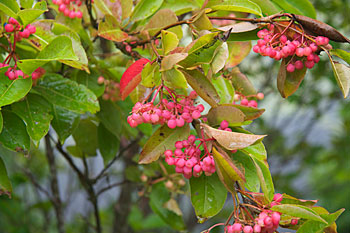 Essential Fatty Acids: (As a combination of omega 3-6-9 oils) I recommend to almost all of my clients taking essential fatty acids as part of their daily routine. Not only do these essential oils support coronary artery functions; they are known to reduce cholesterol, particularly the LDL “bad” type, and raise the HDL “good” cholesterol, protecting us from heart disease and stroke. They also have strong anti-inflammatory actions, supporting the system as a whole, but particularly the joints.
Essential Fatty Acids: (As a combination of omega 3-6-9 oils) I recommend to almost all of my clients taking essential fatty acids as part of their daily routine. Not only do these essential oils support coronary artery functions; they are known to reduce cholesterol, particularly the LDL “bad” type, and raise the HDL “good” cholesterol, protecting us from heart disease and stroke. They also have strong anti-inflammatory actions, supporting the system as a whole, but particularly the joints.
A third benefit is that these fatty acids promote lubrication, to the joint structures as well as to the skin. One of the components of essential fatty acids is known as gamma linoleic acid (GLA), which has pronounced anti-inflammatory actions and is used independently for the treatment of arthritis and skin inflammation. GLA can be taken separately or in combination with the other essential fatty acids. (GLA is found only in Evening Primrose Oil, Black Current Seed Oil, or Borage Seed Oil).
✔ Take 2000 mg of a good Omega 3-6-9 oil daily, or as prescribed by your health care provider.
Probiotics: Probiotics are the beneficial bacteria that support all of the mucous linings of the body. These friendly bacteria support a healthy digestion as well the urinary function, and act to control yeast in our systems. A poor digestion and yeast overgrowth (such as Candida albicans) depletes the immune function, leaving us more vulnerable to invasion by foreign pathogens, like Lyme spirochetes. Antibiotic treatments for Lyme disease do not discriminate between good or bad bacteria so they often kill them all, leaving yeast to proliferate. An effective probiotic will reestablish a healthy gut environment.
Although many people eat yogurt to get their probiotic support, I find two reasons to take probiotics in an encapsulated form. First, yogurt contains acidophilus, but not bifidus or other strains of “good” vital bacteria; and secondly, as the food takes a bath in the stomach acid en route to the intestines, much of the probiotic benefits may be lost. A probiotic enteric-coated tablet or capsule that gets it through the stomach and into the gut where it can be distributed and do the most good.
If one is taking a course of antibiotics the use of a formula that contains Saccharomyces boulardii is recommended. S. boulardii (in combination with other compatible probiotic strains) is a non-pathogenic yeast that is documented to support the normal gastrointestinal flora during antibiotic therapy.
✔ Take a mixed probiotic, with between 5 billion and 50 billion organisms daily, or as directed by your health care provider.
Magnesium: Magnesium is considered an anti-stress mineral, with relaxing effects on both the body and mind. A gentle yet effective muscle relaxant, magnesium helps to relieve muscle cramping and spasms. It is particularly important for arthritic conditions, because it allows calcium to bond into the bone, preventing arthritic deterioration. Today, it is very difficult to get enough magnesium through our food intake as magnesium is leached from the soil with repeated use of fertilizers and pesticides, and supplementation becomes necessary.
Lyme disease and other tick borne diseases have been shown to deplete magnesium from our body. Besides supporting the functioning of bone and the central nervous system, magnesium plays an important role in the repair of all body cells.
✔ Take between 500 to 1000 mg daily. Choose a form of magnesium shown to have high absorption, or as directed by your health care provider.
Vitamin A (as mixed carotinoids): Vitamin A and mixed carotinoids have been shown to play a vital function in promoting the body’s immune function and ability to fight invasion. As Vitamin A is fat soluble, high quantities can be toxic, so I often suggest taking the mixed carotinoids which are converted by the body into vitamin A.
The carotinoids (including beta carotene) have also been shown to promote healing of the mucous linings of the body, and have powerful antioxidant actions that help to eliminate “free radicals.”
✔ Take 10,000 to 25,000 IU daily, or as prescribed by your healthcare provider.
HERBAL ALLIES FOR LYME DISEASE
Herbs to Support the Immune System: These herbs help the body’s natural response in its battle against Lyme disease spirochetes. In this category, I include herbs that have been used historically to nourish the constitution, which Traditional Chinese Medicine calls Kidney root energy.
Herbs With Antimicrobial Actions: In both Western and Eastern medicinal practice, these herbs have been found to have antibiotic as well as antibacterial qualities.
Precaution: All of the antimicrobial herbs listed here are contraindicated in pregnancy, unless used under the supervision of a qualified health care provider.
Herbs to Support Lymphatic Drainage and the Liver: An old teacher of mine, addressing the use of antibiotic drugs in the treatment of bacterial infections, said, “Antibiotics are good, the way machine guns are good. Burglars break into the house; soldiers use machine guns to kill the burglars, then they close the door and are gone, leaving the burglars to rot in the house!” In essence, herbs that support lymphatic drainage and the liver help to clean the house (the body), by eliminating waste toxic matter.
HERBS TO SUPPORT THE IMMUNE SYSTEM
Astragalus (Astragalus membranoceous)
Traditional Chinese herbal medicine practitioners have used Astragalus for thousands of years to increase energy and strengthen resistance to disease. Astragalus not only stimulates the immune system to work more efficiently but it has been shown to have an “adaptogenic” quality; that is, it demonstrates a nonspecific enhancement of the body’s ability to resist a stressor. Astragalus works by balancing an individualʼs immune response: it can stimulate the immune system when needed, but it can also calm an over-reactive immune response, a quality that is critical in the case of an autoimmune disease. Astragalus is one of my favorite herbs; I use it to help prevent disease as well as to muster a strong response against bacterial or viral invasions.
Astragalus is safe enough for infants and to take during pregnancy.Of course, if you are pregnant, always consult a health care practitioner first. In vitro studies, largely conducted in China, indicate that astragalus increases natural killer-cell activity and can enhance the functions of the spleen and the thymus, both producers of immune cells. (Memorial Sloan Kettering Cancer Center Web site. Astragalus. June 7, 2010. – mskcc.org.) In treating Lyme disease, astragalus additionally supports digestion and mental functioning, helping to resolve typical Lyme disease symptoms such as “brain fog,” memory impairment, and fatigue.
Japanese Knotweed (Polygonum cuspidatum)
Japanese knotweed has been in the armament of Chinese and Japanese herbal traditions for thousands of years. Traditional Chinese Medicine has used it as a bloodmoving herb, to resolve inflammation, stagnation, and poor circulation and also as a supportive herb to counter debility and immune fatigue. It is also considered to be an herb that slows down the aging process (together with its relative Polygonum multiflorum, also known as Fo Ti and Shou Wu).
Western medicine learned of and began using many of Japanese knotweedʼs features. It is typically the source in the U.S. of resveratrol, which, unlike any other sources of resveratrol, contains both cisresveratrol and transresveratrol. Preliminary findings in vitro have indicated that resveratrol has beneficial actions in reducing the incidence of cardiovascular disease and elevated LDLcholesterol, and the risk of cancer. (Resveratrol – powerful and natural anti-oxidant helps to combat heart disease, cancer whilst providing excellent anti-aging properties. – health-report.co.uk.)
Japanese knotweed like astragalus has an adaptogenic or immune-balancing quality, which makes this an effective ally in balancing the body’s immune responses; it can stimulate immune cells, as in Lyme disease, or modulate them, as in an autoimmune disease. This herb is particularly helpful for Lyme disease because of its ability to effectively cross the blood-brain barrier, and address the myriad central nervous system symptoms associated with chronic Lyme disease. By supporting the blood flow to difficult-to-reach regions of the body, Japanese knotweedʼs antimicrobial and anti-inflammatory actions can reach the eyes, joints, and brain. The whole plant, except for the root, is used for the treatment of Lyme disease.
Japanese knotweed is considered to be a safe herb, but it should be avoided during pregnancy. In large doses it can cause gastrointestinal symptoms, such as diarrhea or abdominal pain. The concentrated roots contain emodin, which is used as a laxative.
Stinging Nettle (Urtica dioica)
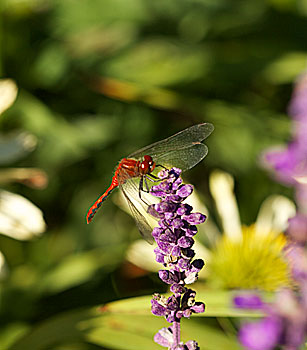 To me, nettle is the most nourishing tonic herb in the Western world. It is so rich in nutrients, particularly iron and Vitamin C, that it could be considered a complete food. Growing as an invasive weed, it seems to suck the nutrients from the soil to itself, thereby benefiting those who use it. A general tonic and immune-enhancing herb, nettle has been used to support the kidney function and has been shown to improve symptoms of prostate enlargement. (Lopatkin NA, Sivkov AV, Medvedev AA. [Combined extract of Sabal palm and nettle in the treatment of patients with lower urinary tract symptoms in double blind, placebo-controlled trial]. Urologiia. 2006;2:12,14-19.)
To me, nettle is the most nourishing tonic herb in the Western world. It is so rich in nutrients, particularly iron and Vitamin C, that it could be considered a complete food. Growing as an invasive weed, it seems to suck the nutrients from the soil to itself, thereby benefiting those who use it. A general tonic and immune-enhancing herb, nettle has been used to support the kidney function and has been shown to improve symptoms of prostate enlargement. (Lopatkin NA, Sivkov AV, Medvedev AA. [Combined extract of Sabal palm and nettle in the treatment of patients with lower urinary tract symptoms in double blind, placebo-controlled trial]. Urologiia. 2006;2:12,14-19.)
For hundreds of years, in numerous countries and cultures, nettle has been used to treat arthritis and gout, as well as skin conditions, including rashes, eczema, and psoriasis. In the tenth century, nettle was one of Wodenʼs nine sacred herbs included in the Anglo Saxon Nine Herbs Charm against nine venoms.
Recent research in Germany and England supports nettleʼs reputation as a premier anti inflammatory herbal medicine by determining that nettle reduces inflammatory cytokines. Nettleʼs use as an ally in the treatment of arthritis has been bolstered by studies showing nettleʼs ability to deal with inflammation in the joints,as well as to help repair and rebuild the joint structures. (Schulze-Tanzil G, de SP, Behnke B, Klingelhoefer S, Scheid A, Shakibaei M. Effects of the antirheumatic remedy hox alpha–a new stinging nettle leaf extract–on matrix metalloproteinases in human chondrocytes in vitro. Histol Histopathol. 2002;17:477-85.)
Today, likely because of its anti-inflammatory properties, nettle is mainly used for countering allergic reactions, particularly hay fever. One in vitro study concluded that “bioactives have been identified in nettle that contribute to the inhibition of pro-inflammatory pathways related to allergic rhinitis. These results provide for the first time, a mechanistic understanding of the role of nettle extracts in reducing allergic and other inflammatory responses in vitro.” (Roschek B Jr, Fink RC, McMichael M, Alberte RS; HerbalScience Group LLC. Stinging nettle extract urtica dioica affects key receptors and enzymes associated with allergic rhinitis.
Phytother Res. 2009;23:920-926.)
For Lyme disease, nettle plays an important role in nourishing our constitution and immune system, and also for its broad-spectrum anti-inflammatory qualities.
Rosavin (Siberian rhodiola rosea), also called golden root, Aaron’s rod, and arctic root
Rhodiola rosea is mostly known as a mood stabilizer and for its adaptogenic property. It seems to be equally effective in the treatment of anxiety and depression, believed to result from its action in balancing the neurotransmitters.
Rhodiola rosea has been used for centuries in Russia and Scandinavia for its stress-reducing qualities. Like Siberian ginseng, it has a balancing effect on the adrenal gland. As I have observed in my clinical practice, when taken regularly, Rosavin is very effective in overcoming fatigue and reinstating mental clarity, helping individuals to mentally focus and resolve the “brain fog” so often associated with Lyme disease.
Cat’s Claw (Uncaria tomentosa), also known as Uña de Gato
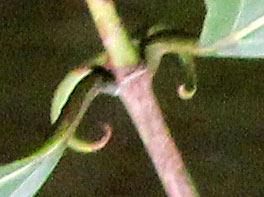 Cat’s claw, a woody vine that grows wild in the Amazon rainforest, has been used for centuries in South America to treat and prevent disease. Its use dates back to the Inca civilization for treatment of a variety of debilitating diseases including inflammatory conditions such as arthritis, infections of the genitourinary tract and skin, digestive complaints, gastric ulcers, and asthma. The Asháninka Indian priests in Perú used Catʼs claw to regulate disturbances between a personʼs body and spirit.
Cat’s claw, a woody vine that grows wild in the Amazon rainforest, has been used for centuries in South America to treat and prevent disease. Its use dates back to the Inca civilization for treatment of a variety of debilitating diseases including inflammatory conditions such as arthritis, infections of the genitourinary tract and skin, digestive complaints, gastric ulcers, and asthma. The Asháninka Indian priests in Perú used Catʼs claw to regulate disturbances between a personʼs body and spirit.
As an immuneprotective agent, Catʼs claw may be useful for arthritic and joint pain, inflammation, and hypersensitivity associated with Lyme disease. Cat’s Claw has been also shown to have multiple antimicrobial qualities making it a valuable ally in dealing with Lyme disease.
Laboratory research with animals suggests that Catʼs claw stimulates part of the immune system and has anti-inflammatory actions; has antitumor properties; greatly stimulates interleukin 1 (IL-1) and interleukin 6 (IL-6); and pentacyclic oxindole alkaloids (as opposed to tetracyclic oxindole alkaloids) from Catʼs claw induce cells to regulate lymphocyte proliferation. (Wurm M, Kacani L, Laus G, Keplinger K, Dierich MP. Pentacyclic oxindole alkaloids from Uncaria tomentosa induce human endothelial cells to release a lymphocyte-proliferation-regulating factor. Planta Med. 1998;64:701-704; Sandoval Chacón M, Thompson JH, Zhang XJ, et al. Antiinflammatory actions of catʼs claw: the role of NF kappaB. Aliment Pharmacol Ther. 1998;12:1279-1289; Sheng Y, Pero RW, Amiri A, Bryngelsson C. Induction of apoptosis and inhibition of proliferation in human tumor cells treated with extracts of Uncaria tomentosa. Anticancer Res. 1998;18:3363-3368; Lemaire I. Assinewe V, Cano P, Awang DV, Arnason JT. Stimulation of interleukin-1 and -6 production in alveolar macrophages by the neotropical liana, Uncaria tomentosa (uña de gato). J Ethnopharmacol. 1999;64:109-115.)
Samento, Banderol and the Cowden protocol.
(Many patients seeing Lyme-literate physicians have experienced benefit in being treated by the protocol developed by Dr. Lee Cowden. While respecting this protocol, I have found that it is far too dense and complex to encourage patient compliance, probably more complex than is in fact necessary for successful treatment in most cases.) DO YOU REALLY NEED THIS?
What I have been able to walk away with from this protocol is the use of special formulations of two Amazonian herbs. The first is the use of Samento a special formulation of the herb Cat’s Claw
In my many years treating Lyme disease anecdotal evidence for the effectiveness of Samento has been substantial. My patients often report a flare up of symptoms at the beginning of treatment—likely indicating a dying off of the spirochetes—and then a gradual improvement. Treatment should begin with a very low dose of Samento and be increased gradually to a full dose.
The side effects of Samento can include digestive upset. This herb is contraindicated for pregnant or lactating women and for individuals taking blood-thinning medications.
Siberian Ginseng (Eleutherococcus senticosus)
Siberian ginseng has been possibly the most studied herb in the world. Developed by Soviet researchers, most of the trials of Siberian ginseng took place in the former Soviet Union on military personnel, athletes, even towns, factory workers, schools, and hospitals, with the aim of improving work output and reducing absences because of illnesses. In 1947, a Russian scientist, N.V. Lazarev, coined the word “adaptogen.” He was interested in looking for drugs that helped the body adapt to physical and emotional stress. It was found that groups taking this herb demonstrated a balancing effect on the adrenal glands in an idiosyncratic way: if the adrenals were depleted, this herbal preparation increased the adrenal functions, whereas if the adrenals were overstimulated and pumping out adrenal uncontrollably, the herb seemed to slow them down. This balancing action came thereafter to be called “adaptogenic”; since then, we have discovered a number of additional adaptogenic herbs, such as hawthorn for cardiac functions, and chaste berry for gynecological functions.
Siberian ginseng, from the Eleuthero root, is, in essence, not ginseng; ginseng refers properly only to the American and Panax species. Eleuthero has been used as a tonic and immune- enhancing herb for thousands of years in China and Russia. It has also been used to improve mental functioning and enhance both mental and physical performance, and may be effective in improving certain viral infections and the common cold.
In my practice, I find this herb very beneficial for Lyme disease, not only for its immune support, but just as importantly for its stress-balancing qualities and its ability to resolve many of the mental and cognitive symptoms associated with Lyme disease—“mental fog,” inability to focus, insomnia, and generalized anxiety. By supporting the adrenals, Siberian ginseng may be the best herb to help us deal effectively with stress.
Teasel Root (Dipsacus sylvestris)
Teasel root has been used for centuries in Traditional Chinese Medicine. It has been considered a superior herb to support and nourish the Kidney and Liver, promote circulation, and resolve obstructions. Consequently, dipsacus has been used specifically for low back pain and joint problems (low back, knee pain and swelling indicate a depleted Kidney energy).
Because Lyme disease spirochetes attack and penetrate into collagen tissue, affecting the joints and tendons throughout the body, teasel root seems to fit right in. Matthew Wood, a Registered Herbalist and well-known lecturer, is the first herbalist I know of who recommended Teasel for Lyme disease, and the buzz has spread. According to Wood, teasel, rather than killing the bacteria, changes the bodyʼs environment, so that the body itself can kill off the Lyme bacteria by bringing the bacteria into the bloodstream, where it can detoxify. (Lyme Disease Research Database Web site. March 6, 2010.- lyme-disease-research-database.com.) Other Lyme disease blogs are filled with testimonials about teasel and how it brings relief from Lymeʼs painful symptoms.
As Teasel root tincture is exceptionally powerful, many people with Lyme disease have reported experiencing what is called a “Herxheimer Reaction” after taking it. In fact, only a few drops of the tincture can cause a reaction. The Herxheimer phenomenon, first described by two European dermatologists, Adolf Jarisch and Karl Herxheimer, is the immune systemʼs reaction to the toxins released when the pathogens are killed off and are not eliminated from the body quickly enough. In other words, the “Herx” reaction occurs when the body is detoxifying and killing the spirochetes. Although it may be distressing, the Herx Reaction is a sign that the spirochetes are dying off and healing is taking place.
In my practice I follow Matthew Woodʼs protocol of using very small doses of teasel at the start and gradually increasing the dosage. Begin with 1 drop, twice daily, and gradually increase the dosage to about 15 drops, twice daily.
HERBS WITH ANTIMICROBIAL ACTIONS
Precaution: All of the antimicrobial herbs listed here are contraindicated in pregnancy, unless used under the supervision of a qualified health care provider. The whole herb is usually safe over long periods of time, but if digestive symptoms occur, discontinue use, and the symptoms usually will resolve quickly.
Sweet Wormwood (Artemisia annua), also called Chinese wormwood and Qing Hao
Traditional Chinese Medicine has used sweet wormwood for over 2,000 years to treat fevers, inflammations, and bacterial infections, particularly malaria and other parasites. Artemisinin, a naturally occurring component of sweet wormwood, is a potent antimalarial and is considered to be about 90% effective in curing uncomplicated malaria. However, in 2006, the World Health Organizationʼs Global Malaria Programme issued an ultimatum to the pharmaceutical industry to phase out artemisinin as a monotherapy against malaria, because malaria parasites were becoming resistant to artemisinin as a single oral drug. WHO recommended using instead artemisinin combination therapies (ACTs). (Rehwagen C. WHO ultimatum on artemisinin monotherapy is showing results. BMJ. 2006;332:1176.)
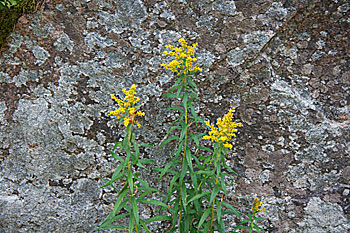 Artemisinin was isolated from sweet wormwood by Chinese scientists in the 1970s; since then both Western and Eastern medicine have shown sharpened interest in studying artemisininʼs effects in treating other conditions, in particular various types of cancer. One NIH study analyzed 55 cell lines of artesunate, a derivative of artemisinin, and showed that it has anticancer activities against cell lines of leukemia; colon cancer; melanoma; breast, ovarian, renal, prostate, and central nervous system cancer. (Efferth T, Dunstan H, Sauerbrey A, Miyachi H, Chitambar CR. The anti-malarial artesunate is also active against cancer. Int J Oncol. 2001;18:767-773.)
Artemisinin was isolated from sweet wormwood by Chinese scientists in the 1970s; since then both Western and Eastern medicine have shown sharpened interest in studying artemisininʼs effects in treating other conditions, in particular various types of cancer. One NIH study analyzed 55 cell lines of artesunate, a derivative of artemisinin, and showed that it has anticancer activities against cell lines of leukemia; colon cancer; melanoma; breast, ovarian, renal, prostate, and central nervous system cancer. (Efferth T, Dunstan H, Sauerbrey A, Miyachi H, Chitambar CR. The anti-malarial artesunate is also active against cancer. Int J Oncol. 2001;18:767-773.)
An ever-growing amount of Western and Eastern research has concentrated on the potential for artemisinin and its derivatives, as a source of naturally occurring anticancer mechanisms, for inhibiting the growth of prostate, lung, cervical, and thyroid cancer cells, and for use as cancer chemotherapy that is nontoxic to normal human cells. (Memorial Sloan-Kettering Cancer Center Web site. Artemisia annua. May 11, 2011. – mskcc.org Willoughby JA Sr, Sundar SN, Cheung M, et al. Artemisinin blocks prostate cancer growth and cell cycle progression by disrupting Sp1 interactions with the cyclin-dependent kinase-4 (CDK4) promoter and inhibiting CDK4 gene expression. J Biol Chem. 2009;284:2203-2213; Paik IH, Xie S, Shapiro TA, et al. Second generation, orally active, antimalarial, artemisinin-derived trioxane dimers with high stability, efficacy, and anticancer activity. J Med Chem. 2006;49:2731-2734; Zhai DD, Supaibulwatana K, Zhong JJ. Inhibition of tumor cell proliferation and induction of apoptosis in human lung carcinoma 95-D cells by a new sesquiterpene from hairy roots of Artemisia annua. Phytomedicine. 2010;17:856-861; Disbrow GL, Baege AC, Kierpiec KA, et al. Dihydroartemisinin is cytotoxic to papillomavirus-expressing epithelial cells in vitro and in vivo. Cancer Res. 2005;65:10854-10861.)
Although sweet wormwoodʼs constituent, artemisinin, is felt to be the chemically active ingredient as an antimicrobial, the whole plant (which contains numerous other components) seems to be therapeutically effective, without the side effects often reported when taking artemisinin by itself. Sweet wormwood with its broad spectrum of antimicrobial actions is a targeted herb in the treatment of Lyme disease. As Stephen Harrod Buhner states, “The herb is exceptionally potent in that it spreads quickly throughout the body and it easily crosses the blood/brain barrier. Because it infuses the blood, it is carried throughout the body to every cell, all of which need blood to live.” (Healing Lyme: Natural Healing and Prevention of Lyme Borreliosis and Its Coinfections. Silver City, NM: Raven Press; 2005:183.)
Wormwood (Artemisia absinthium), also known as common wormwood
Wormwood, like its Asian brother, Sweet Wormwood, has been used throughout the ages for its anti-parasitic actions: hence, the name, Wormwood. The oil of wormwood which carries a characteristic smell, has been used in Europe and America as a foliage spray against pests and from anecdotal evidence it keeps mosquitoes at bay.
Wormwoodʼs bitter qualities have been used as an ingredient in apératif bitters which act to support digestion and liver functions. It is an ingredient in the spirit absinthe that derives its name from the plant Artemisia absinthium. As a medicinal herb, it works as a tonic to promote good digestion, alleviate an upset stomach, and guard against intestinal invasions by bacteria or parasites.
It’s antiseptic and antibiotic actions were demonstrated in a recent study which showed its action against grampositive pathogenic bacteria. Although not s studied in its specific effects against Lyme disease, in my practice I find that a small quantity of both artemisia species is beneficial, with very few incidents of side effects.
Andrographis (Andrographis paniculata), also known in China as Chuan xin lian, or green chiretta
Andrographis has been used traditionally in China to treat all manner of febrile diseases and infections. It has also been used throughout China and India for its apparent anti-parasitic and antimicrobial actions to treat syphilis, malaria, and worms, and for swollen lymph glands with fever, abscesses, and lung and sinus infections. It was used in many cultures to treat syphilis until antibiotic drugs became more available.
Recent scientific research, generated by increasing interest in the broad therapeutic potential of andrographis, has indicated that it has antimicrobial effects, supports the immune function, increases interleukin-2 production, and has some cancer-targeting actions. (Singha PK, Roy S, Dey S. Antimicrobial activity of Andrographis paniculata. Fitoterapia. 2003;74:692-694; Kumar RA, Sridevi K, Kumar NV, Nanduri S, Rajagopal S. Anticancer and immunostimulatory compounds from Andrographis paniculata. J Ethnopharmacol. 2004;92:291-295; Rajagopal S, Kumar RA, Deevi DS, Satyanarayana C, Rajagopalan R. Andrographolide, a potential cancer therapeutic agent isolated from Andrographis paniculata. J Exp Ther Oncol. 2003;3:147-158.)
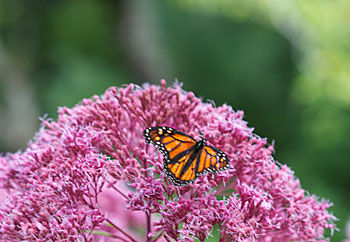 Andrographis is known in China and India as the “king of bitters” because of its intense bitter quality. It is very strong in its liquid form, so it is often prescribed as capsules or tablets. This bitter quality has benefits, in that it supports digestion and the liver function. Traditional Chinese Medicine qualifies herbs according to Four Energies which relate to their perceived temperatures; andrographis is seen as extremely “cold.” Cold herbs relieve conditions in which there is Heat in the body, so andrographis is used primarily to treat diseases that generate heat.
Andrographis is known in China and India as the “king of bitters” because of its intense bitter quality. It is very strong in its liquid form, so it is often prescribed as capsules or tablets. This bitter quality has benefits, in that it supports digestion and the liver function. Traditional Chinese Medicine qualifies herbs according to Four Energies which relate to their perceived temperatures; andrographis is seen as extremely “cold.” Cold herbs relieve conditions in which there is Heat in the body, so andrographis is used primarily to treat diseases that generate heat.
Because of its strong actions and cold nature, I find it advisable to take andrographis only for acute Lyme disease and for short durations. I ask my clients to be sensitive to possible side effects such as an extreme chill and sensitivity to cold, as well as digestive upset or skin reactions such as hives. For chronic Lyme disease in which fatigue, body aches and pains, and neurological symptoms are predominant, I suggest other, more gentle antimicrobial herbs.
Barberry (Berberis vulgaris), also known as pepperidge bush
Barberry is a native plant of Europe and Great Britain; it has been used for medicinal purposes in Europe since the Middle Ages. Various species can be found growing throughout the U.S. and worldwide; the plant has played a prominent role in healing for more than 2,500 years in both Chinese and Ayurvedic medicine. Berberis is a close relative of Golden Seal and Oregon Grape, all three of which contain berberine alkaloids that have demonstrated antimicrobial and antibiotic activity against bacteria, viruses, fungi, protozoans, chlamydia, and intestinal parasite infections. (Berberine. Altern Med Rev. 2000;5:175-177.)
Berberine’s action in inhibiting Candida, as well as pathogenic bacteria, prevents the overgrowth of yeast that is a common side effect of antibiotic use. (Murray MT. The Healing Power of Herbs: The Enlightened Personʼs guide to the Wonders of Medicinal Plants. 2nd ed. Rocklin, CA; Prima Publishing: 1995.) A study showed that berberis fights infections caused by streptococci, but also blocks the adherence of these pathogens to the host cell. It seems to indicate that berberis not only attacks pathogens but also helps our own cells repel an invasion. (Sun D, Courtney HS, Beachey EH. Berberine sulfate blocks adherence of streptococcus pyogenes to epithelial cells, fibronectin, and hexadecane. Antimicrob Agents Chemother. 1988;32:1370- 1374.)
In my practice, I find that in the battle against Lyme disease, berberis is a well-endowed ally.
ALLIES TO SUPPORT LYMPHATIC DRAINAGE AND GENERAL DETOXIFICATION
Chlorella (Chlorella vulgaris)
Chlorella is a fresh water single-celled algae. As a food source, it is close to ideal containing about 38 times the protein of soybeans, as well as amino acids, vitamins and minerals, including the natural anti-depressant magnesium. Most importantly to us it contains very high quantities of the natural cleansing agent chlorophyll.
Chlorella is used by over 10 million Japanese to fight obesity, weight gain related diabetes, cholesterol and high blood pressure. It helps in the removal of toxins from our bodies: blood, lymph, liver and bowel. Meticulous double-blind studies demonstrate it’s effectiveness in heavy metal chelation. It helps oxygenate our system, balances our PH, boosts our immune and last but certainly not least helps reduce the impact of herxheimer reactions in Lyme patients.
It is a strong all-around addition to our nutritional well-being.
Sarsaparilla (Smilax sarsaparilla)
Smilax sarsaparilla has been used as a blood purifier and a nourishing tonic in numerous tonic preparations to support the whole body. In South America it has been thought to enhance male virility, as well as to fortify women through their menopausal years.
French physician Nicholas Monardes described its use in 1574 to treat syphilis. Since it was assumed that Christopher Columbus’s crew had brought the syphilis epidemic in Europe from the Americas, it was felt that the cure might lie in Americaʼs herbs. A study done by the British of Portuguese soldiers in 1812 showed that the soldiers, suffering from syphilis who were treated with sarsaparilla recovered much faster than those treated with mercury (the treatment of choice in those days). The Chinese also used sarsaparilla to treat syphilis, and through blood tests showed that sarsaparilla was effective in 90% of cases of acute syphilis and 50% of cases of chronic syphilis. (Murray MT. The Healing Power of Herbs: The Enlightened Personʼs guide to the Wonders of Medicinal Plants. 2nd ed. Rocklin, CA; Prima Publishing: 1995:7.)
Increasing evidence indicates that sarsaparilla acts as an endotoxin binder (this binding action helps to purify the blood of toxins). As bacteria break down, they release endotoxins that normally are cleansed from the gut by the lymphatic system and the liver. If the endotoxins are excessive and cannot be eliminated, the body experiences a toxic overload. This toxic overload triggers an inflammatory reaction as the body moves into a fight pattern, causing a flare-up of symptoms of arthritic pain, skin inflammation, and irritability. Sarsaparilla’s binding of endotoxins in the intestines before they get into the bloodstream prevents inflammation. (Taylor L. The Healing Power of Rainforest Herbs. Garden City Park, NY: Square One Publishers; 2005.)
Through its immune enhancing properties, anti-spirochete actions, and ability to bind endotoxins and purify the bloodstream, sarsaparilla is a well-rounded, beneficial herb in the treatment and prevention of Lyme disease.
Cleavers (Galium aparine), also known as clivers or goosegrass
The cleavers plant grows all over the world, and has been used for millennia for the treatment of swollen glands and urinary infections.
Known in many cultures as a blood cleanser, cleavers helps to remove toxins from the bloodstream, reducing heat and inflammation. Additionally, it helps the body to effectively eliminate toxins through the urine; it has a diuretic action that induces urination, which further aids in the elimination of waste from the body.
Cleavers has traditionally been used to treat arthritis, gout, and skin disorders (particularly eczema and psoriasis). The herb helps to eliminate the sludge that accumulates in the joints and skin pores when the liver and lymph system are not working well. Cleaversʼ diuretic and cleansing actions explains why it has traditionally been used for cystitis and urinary tract infections.
For Lyme disease, I use cleavers, with its healthy lymphatic drainage, as an aid to destroying Lyme bacteria and to eliminate the waste toxins from the body.
Milk Thistle (Carduus marianus)
 Milk thistle has been traditionally used as a liver tonic for over 2,000 years, and it is still popular today in Europe and the U.S. for various liver diseases. It was also used historically to enhance breast milk flow but there has been insufficient scientific evidence to support its use in breastfeeding.
Milk thistle has been traditionally used as a liver tonic for over 2,000 years, and it is still popular today in Europe and the U.S. for various liver diseases. It was also used historically to enhance breast milk flow but there has been insufficient scientific evidence to support its use in breastfeeding.
The active ingredient in milk thistle that protects the liver is known as silymarin (actually a group of flavonoids) which repairs liver cells damaged by toxic substances, prevents new liver cells from being destroyed by toxins, and is a strong antioxidant.
Although there is currently insufficient evidence from high-quality clinical trials to determine the effects of milk thistle in treating liver disease, laboratory cell cultures indicate that silymarin and silymarin-derived compounds show antiviral, anti-inflammatory, and immune-modifying actions
in human liver and immune cells, and may influence the outcome of hepatitis C.(Polyak SJ, Morishima C, Lohmann V, et al. Identification of hepatoprotective flavonolignans from silymarin. Proc Natl Acad Sci U S A. 2010;107:5995-5999.) Furthermore, the authors of a systematic review of 65 clinical studies concluded that “it is reasonable to employ silymarin as a supportive element in the therapy of . . . (alcoholic and grade Child ʻAʼ) liver cirrhosis.” (Saller R, Brignoli R, Melzer J, Meier R. An updated systematic review with meta-analysis for the clinical evidence of silymarin. Forsch Komplementmed. 2008;15:9-20.)
in human liver and immune cells, and may influence the outcome of hepatitis C.(Polyak SJ, Morishima C, Lohmann V, et al. Identification of hepatoprotective flavonolignans from silymarin. Proc Natl Acad Sci U S A. 2010;107:5995-5999.) Furthermore, the authors of a systematic review of 65 clinical studies concluded that “it is reasonable to employ silymarin as a supportive element in the therapy of . . . (alcoholic and grade Child ʻAʼ) liver cirrhosis.” (Saller R, Brignoli R, Melzer J, Meier R. An updated systematic review with meta-analysis for the clinical evidence of silymarin. Forsch Komplementmed. 2008;15:9-20.)
In my practice, I have used milk thistle as an antidote for clients suffering from chronic hepatitis, with efficacious results. In a number of cases, my clientsʼ hepatitis completely disappeared after taking milk thistle. Milk thistle, through its restorative and supportive actions on liver functioning, is a strong weapon in the armamentarium of herbs that I use to provide for the general health of my clients.
I find that in the treatment of Lyme disease, milk thistle supports the liver in its strenuous task of helping detoxify the system from the bodily debris field created by the Lyme spirochetes.
TOOLS TO ADDRESS BIOFILM
Nattokinase and Serrapeptase are enzymes first extracted and purified in Japan and originally used among other things as natural blood thinners. Nattokinase is derived from fermented soy beans and Serrapeptase is derived from the enzymes that the silk worm uses to dissolve it’s cocoon.
As we discussed earlier, many Lyme researchers speculate that bacterial biofilm is playing a role in shielding the borrelia from antibiotic and antimicrobial therapies. The biofilms would also hinder our body’s own immune defenses from reaching the target. Nattokinase and Serrapeptase have been used by many Lyme literate health-care professionals in the attempt to dissolve this polysaccharide matrix with positive results.
Because of the toxic build-up of heavy metals and bacterial debris inherent to biofilm, it is important to combine the use of Nattokinase and Serrapeptase with a detoxification protocol such as that of the previously discussed Chlorella.
The most effective way to use Nattokinase and Serrapeptase is to take them on an empty stomach to prevent the enzymes from digesting our food. The hour before bedtime offers both an empty stomach and the chance to sleep off the potential herxheimer reaction. One half-hour after ingesting the enzymes, we suggest taking the Chlorella and a course of our anti-microbial/Lyme herbs. A Chronic Lyme protocol usually repeats this practice over several months.
(Traditionally, both Western and Chinese cultures have found that the benefit of taking a combination of herbs is greater than the effect of taking a single herb. After over thirty years as an herbalist, I have become aware of the synergy created by combinations of certain herbs, and this understanding has been used to create Jason’s special formulas. I also list Traditional Chinese Medicine herbal tonics that exemplify this synergy.)
Jason’s LymeOut Formula is a unique and groundbreaking herbal formula for Lyme disease that I developed after ten years of treating this multilevel, tenacious disease. LymeOut is a synergistic blend of Western and Chinese medicinal herbs that help promote the body’s immune function, fight invading organisms, and detoxify the Liver and lymphatic system. LymeOut can be taken alone or in combination with an antibiotic regime prescribed by a Lyme-literate physician.
Herbal Remedies for Specific Symptoms of Lyme Disease
The LymeOut Formula is included in Jason’s Simple Solution Packages as a powerful remedy for Lyme disease in general. For each of the specific, key symptoms of Lyme disease described below, I recommend taking LymeOut and adding other essential herbs.
For Debility and Fatigue
Take LymeOut and add—
Japanese Knotweed (Polygonum cuspidatum). Japanese knotweed is an ideal addendum to a Lyme disease protocol. In Traditional Chinese Medicine, Japanese knotweed has been used to strengthen the immune function and support blood circulation. The unique quality of the extract of Japanese knotweed makes it a leading source in the U.S. of resveratrol, which is considered to be a powerful antioxidant. In vitro studies of resveratrol found in Japanese knotweed have shown that the herb has significant anti-inflammatory and antioxidant properties. (Resveratrol – powerful and natural anti-oxidant helps to combat heart disease, cancer whilst providing excellent anti-aging properties. http://www.health-report.co.uk/ resveratrol.htm.)
Astragalus and Ganoderma Formula. This formula has been long-used in Traditional Chinese Medicine to revitalize the Kidney energy (the body’s battery pack) and to provide powerful support for the immune system.
For Brain Fog
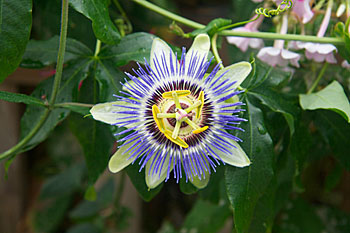 Rosavin (Siberian rhodiola rosea) has been used for thousands of years in Russia and Siberia as a general tonic to reduce stress. It is now used extensively for its benefit in promoting general energy levels, and for its antidepressant actions. In my practice, and in the experience of many other practitioners who treat Lyme disease naturally, I have found that Rosavin is the most effective natural remedy to clear up “brain fog” and help restore cognitive functions.
Rosavin (Siberian rhodiola rosea) has been used for thousands of years in Russia and Siberia as a general tonic to reduce stress. It is now used extensively for its benefit in promoting general energy levels, and for its antidepressant actions. In my practice, and in the experience of many other practitioners who treat Lyme disease naturally, I have found that Rosavin is the most effective natural remedy to clear up “brain fog” and help restore cognitive functions.For Arthritic Symptoms and Inflamed Joints
Essential Oil: Omega 3-6-9. This formula is a superior blend of Omega 3, 6, and 9 oils, which lubricates the joints; it also acts as an anti-inflammatory and sustains cardiovascular health. The combination of Essential Oil:Omega 3-6-9, ArthroFlex, and LymeOut provides total joint support.
For Fever, Swollen Glands, and Generalized Inflammation
Andrographis (Andrographis paniculata), also known in China as Chuan Xin Lian. Traditional Chinese Medicine has used andrographis for centuries as a powerful anti-inflammatory and antiparasitic herb. Beneficial for infections of all kinds, it is particularly effective for Lyme disease when Heat signs are present.
Acupuncture or acupressure supports the bodyʼs healing process and can be an important component of a protocol for treating Lyme disease. Of course, a good acupuncturist would consider many characteristic variables about the patient, the length
of time the patient has had the disease, and the presentation of symptoms.
of time the patient has had the disease, and the presentation of symptoms.
The following acupoints are, of course, described in general; if acupoints are combined, they gently support the immune system and help the Liver and lymph system in their tasks of relieving stagnation and supporting detoxification.
ACUPOINTS TO SUPPORT THE IMMUNE SYSTEM
Lung 9 (“Great Abyss”): This point benefits the immune system and in particular nourishes the Lung in its production of Wei Qi (immune energy); it also helps the Lung circulate blood and energy throughout the body. This point is also known to generally support the circulation of both energy and blood.
Lung 9 is located on the palm side of the wrist, on the crease of the wrist, in the depression at the base of the thumb.
Conception Vessel 17 (“Sea of Tranquility”): This is a powerful immune-stimulating point that provides support for the Lung energies, which produce the Wei Qi. It also nourishes the Heart, which houses the Shen (spirit), thus helping to reduce the anxiety and depression so common among chronic Lyme disease patients.
Conception Vessel 17 is located at the center of the breastbone, directly above the thymus gland (the originating source of T-cells).
ACUPOINTS TO SUPPORT LYMPHATIC DRAINAGE AND THE LIVER
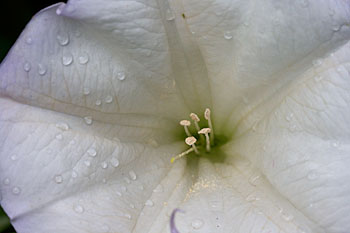 Liver 3 (“Great Rushing”): This is one of the main points to relieve stagnation and restore a dynamic flow of energy and blood, breaking up obstructions that impair the body’s self healing.
Liver 3 (“Great Rushing”): This is one of the main points to relieve stagnation and restore a dynamic flow of energy and blood, breaking up obstructions that impair the body’s self healing.
Liver 3 is located on the upper part of the foot, in the depression in the webbing between the big toe and the second toe.
Large Intestine 4 (“Great Eliminator”): Large Intestine 4 together with Liver 3 make up what Traditional Chinese Medicine calls the “four gates.” I visualize that when these points are used together, the effect is like opening the windows and doors of the house and letting the fresh air circulate, eliminating the stale, polluted air. This point is used for draining or dispersing energy that is “stuck” in the upper part of the body, particularly the head—good for foggy thinking and headaches.
Large Intestine 4 is located on the top of the hand, in the webbing between the thumb and the second finger.
Spleen 6 (“Three Yin Meeting Point”): This is one of the most used points in acupuncture because of its many functions. Primarily used to nourish the yin (water, lubricating) essence—which is often extremely depleted with Lyme disease—it is also used with the acupoint Spleen 10 to break up stagnation, move the blood, and disperse heat and damp. Targeting these acupoints helps relieve the joint pains and varied inflammatory reactions in the body that are common symptoms of Lyme disease.
Spleen 6 is located on the inner lower leg, approximately three inches above the ankle bone, in the depression just on the inside of the bone.
Spleen 10 (“Sea of Blood”): This point is used to invigorate and move the blood, harmonize the Spleenʼs energy and remove heat from the blood, which is manifested in hot painful joints, skin problems, and agitated thoughts.
Spleen 10 is located about two inches above the knee, on the inner thigh.
Stomach 40 (“Abundant Splendor”): Stomach 40 is the archetypical point used to disperse excess dampness from the Stomach channel, helping to resolve such symptoms as lethargy, foggy thinking, heaviness of limbs, and aching joints. All of these symptoms are typical of Lyme disease. When I stimulate this point I ask my clients to imagine that a gentle gust of wind comes in and blows away the fog that obscures the “abundant splendor,” which has existed all along. Stomach 40 is located between the ankle and the knee, on the outer side of the lower leg, two inches laterally backward from the shinbone, in the bulge of the calf muscle.
Clearly, Lyme disease is an attack by bacteria; but when we are confronted with any disease we can see ourselves either as itʼs victim or we can ask the disease what possible gifts it might be bringing us. Try these questions on an attack of Lyme disease
and see if your answers “feel” right.
and see if your answers “feel” right.
http://fiveelementhealing.net/

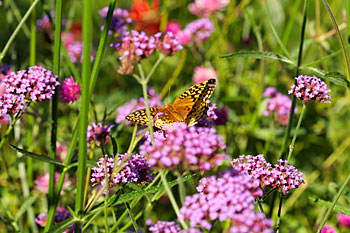
No comments:
Post a Comment